The Leica 40mm Summicron is an odd little lens, both in terms of what it is, and its reputation. I guess this is why I was attracted to the idea of trying one out; that and it’s match to my little Leica CL. If you spend any time reading about this lens, you’ll find the same sorts of comments from people time and time again. “It’s Leicas greatest sleeper”, “Summicron quality for less than Summicron money”, “…but bokeh can be questionable”. Additionally to these common observations on quality, there also seems to be a lot of information about the lens that veers into hearsay. Much of this surrounds compatibility issues and whether or not the lens can or should be used with any other camera than the Leica(/Minolta) CL or the Minolta CLE.
Unsurprisingly, the story from me isn’t going to deviate much from that. For a start, I’ve been so impressed by the thing, I wanted to add my own words to the positive chorus. Additionally to this – since I’ve spent so much time reading online about this lens – I thought it might be useful to bring some of what I’ve found helpful combined with some of my own thoughts together into one place… Hopefully, if you find this post looking for information on the 40mm Summicron, I can save you the job of scrolling through endless comments on forums to get to the bottom of some of the things people say about it.
A bit of background first
I wasn’t around, but from what I understand, Leica had some real problems in the 1970’s. They brought out the Leica M5 and it didn’t go down as well as it could have. Then in collaboration with Minolta they brought out the Leica CL, a camera that supposedly went down a little too well and pulled focus away from the Leica M5. The 40mm Summicron was lens that came with the CL. A small camera deserved a small lens, and that’s what the 40mm Summicron is – in fact I think it might well be the smallest M-mount lens Leica have yet to produce. Of course whilst some advantage comes with the size, the story by no means ends there.
The 40mm lens
The Leica CL was designed specifically to work with a 40mm lens. These days trends have pushed more toward the use of either 50 or 35mm with 40 being a bit of a piggy in the middle, with many people regarding it as neither here nor there.
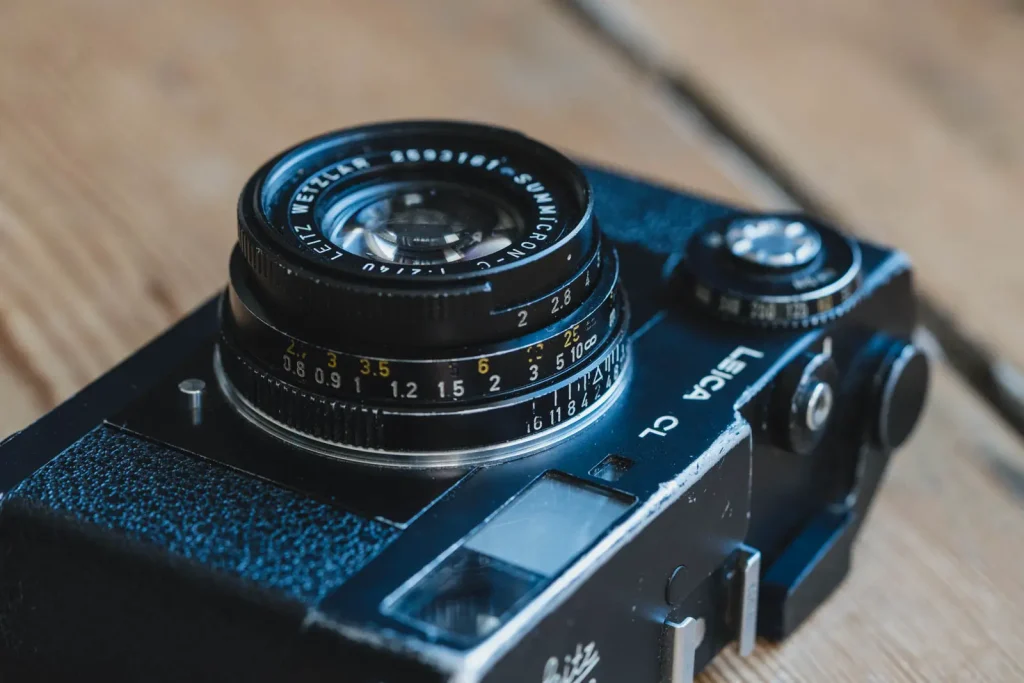
But, back in the 70’s, 40mm was a popular focal length in compact cameras. It must have been much more widely considered to be the ideal single carry-everywhere focal length as there were countless compact cameras released with 40mm lenses; the Olympus Trip, Rollei 35 and Canon QL17 GIII to name a few popular classics.
I suspect that Leica – though I have no evidence, facts or even hearsay to back this up – felt they were missing out on some of this marketplace. A small camera like the CL, manufactured in a less costly way, paired with a 40mm lens could potentially tap in to that market. Yet by making the Leica CL also compatible with 50mm and 90mm lenses commonly owned by users of the conventional Leica Ms, it could key into and provide an extension to a Leica users system, rather than be a discrete system or camera of its own.
I shall of course come back to these thoughts in more depth when I come to write about my (somewhat tatty) Leica CL. I just mention all this now as I think it helps highlight what the 40mm Summicron is and how it both fits into and sits on the fringes of the history of the Leica M camera.
The 40mm Summicron rangefinder compatibility myth(?)
Whilst the Leica CL feels like it can key itself neatly into Leica M shooters system, the 40mm Summicron is somewhat less compatible. In fact at the time of release, Leica supposedly claimed it wasn’t really compatible at all.
Leica claims were focused on the rangefinder coupling. They said that the lens’s rangefinder coupling was of a slightly different design and as such there was no guarantee that it would focus perfectly with other Leica bodies. This information seems to be widely perpetuated online, though some seem to claim It was a cynical ploy on Leica’s part to ensure people didn’t choose the lens over the more expensive 35mm or 50mm variety of Summicron.
Is there any truth to Leica’s claims? Technically yes, the lens couples to the rangefinders arm via a pitched cam. Apart from the 90mm lens also designed to work with the CL, as far as I know, all other M and LTM lenses have a Parallel cam.
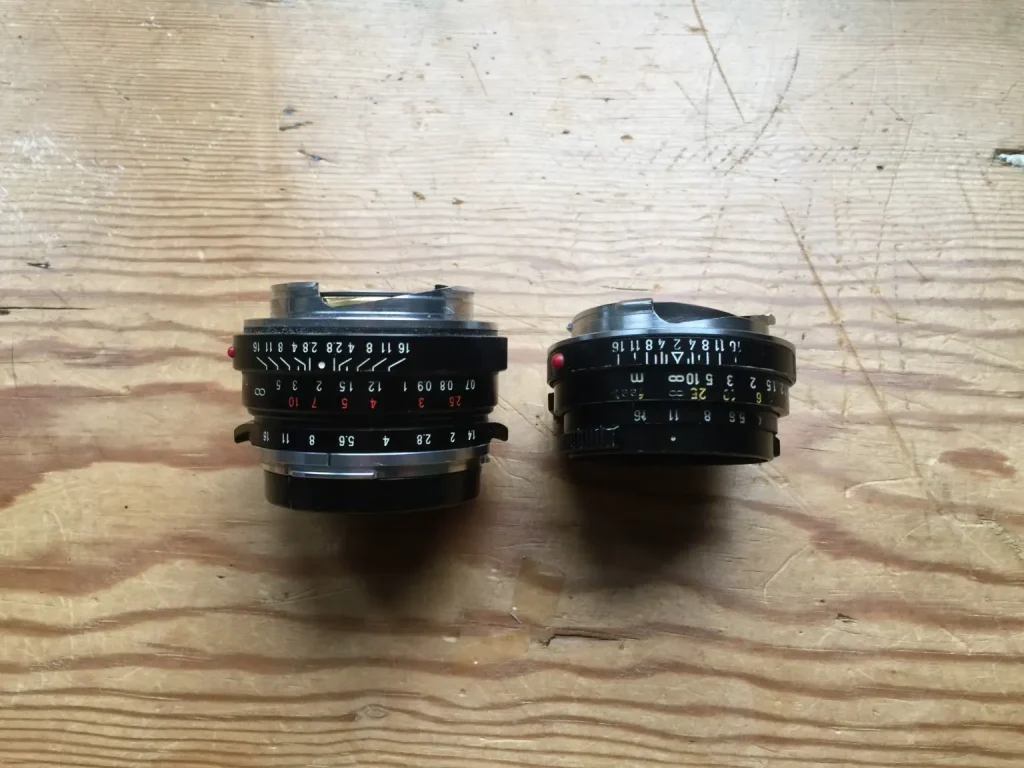
This doesn’t automatically mean that there will be rangefinder incompatibilities. Instead, it apparently just means that the chance of rangefinder incompatibility is somewhat increased, especially if adjustments have been made to the cameras rangefinder since it left the factory.
Fortunately, since it seems so widely argued against by so many people apparently not even believing Leica – never mind actually having problems focusing the thing – it’s probably such a minor issue, it’s of less practical consequence than Leica made out. I suppose one should expect little less from fastidious German engineers…
Happily for me, like most people, I’ve not had any issues, even shooting it on my Leica M3. In short, I wouldn’t let this potential for issue – however big or small it is in the real world – stop you buying the lens… Just be aware if you do have problems focusing the thing on your Leica M, this might well be the source of the problem.
40mm field of view compatibility
Beyond the potential rangefinder incompatibility, there’s also the not insignificant issue of not one other Leica M camera having 40mm frame lines.
Again, depending on your perspective, this might not be as bigger deal as it sounds. Having experimented with the 40mm on my Sony A7s – just to see how far out the frame lines are on my Leicas – as is widely reported, it does appear that the 35mm lines on both my M8 and M-A are remarkably close what the 40mm actually captures. This isn’t to say that the 40mm is closer to a 35mm in focal length, more in fact that the frame lines on the later M-mount rangefinders are a little on the conservative side.
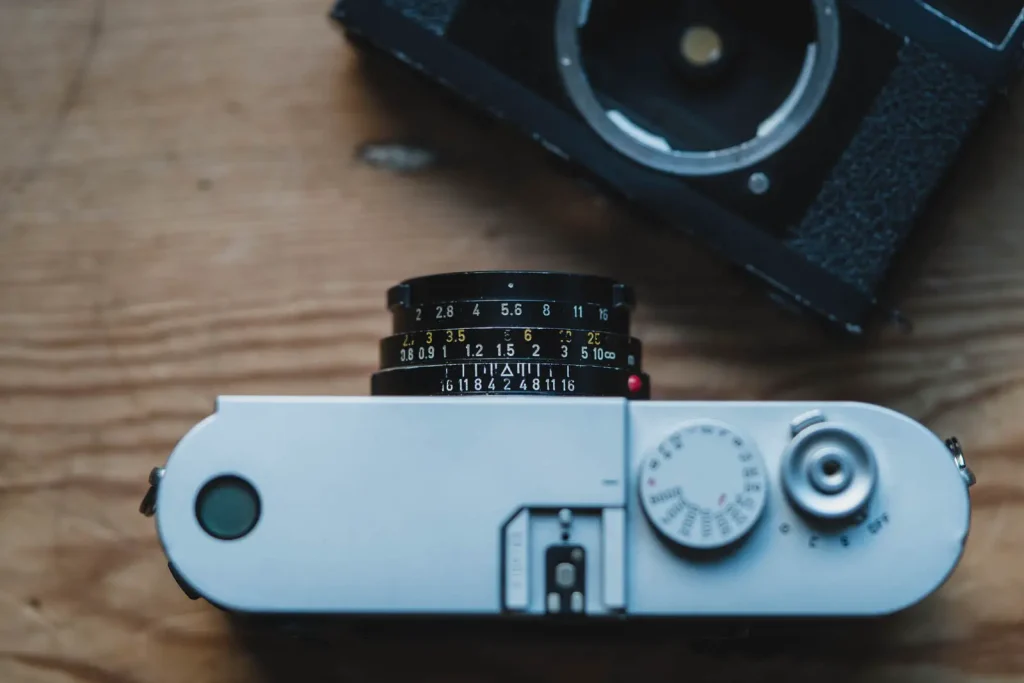
As such, the consensus seems to be that if you want to use a 40mm on a Leica M, use the 35mm lines on the later models and the 50mm lines on the earlier. In my experience the later framing lines are just slightly bigger than what the 40mm captures. This takes a little getting used to when you are used to your frame lines under-framing, but really the difference is so slight it’s barely worth thinking about. If anything you are more likely to notice a difference when closer focusing, but even then it’s not really a big issue.
Activating the 35mm frame lines
Of course saying to use one set of frame lines on one camera, and another set in the other, isn’t quite as simple as just that. The problem is, the 40mm natively activates the 50mm frame lines. This is fine if you want to use it with 50mm lines on an older Leica, but if you want to use it on a newer body with 35mm lines, they don’t show as standard. Though of course, with a little bit common sense, more digging, and bit of asking about on social media, I found a few potential solutions to this problem too.
Use the frame line preview lever
The first, most obvious and least permanent solution to this problem is just to pull the frame line preview lever into the position that brings up the 35mm lines. This isn’t ideal as it makes focusing and seeing frame lines at the same time a little difficult; but you do get the hang of it.
Jam the frame line lever
The second option sounds a little barbaric, but actually a small bit of card pushed between frame lines preview lever and camera body will jam it in the position you need it to stay. (blu tac is apparently also an option – see comments below) This has actually been the method I settled on. (Thanks to Matthew Maber for that suggestion)
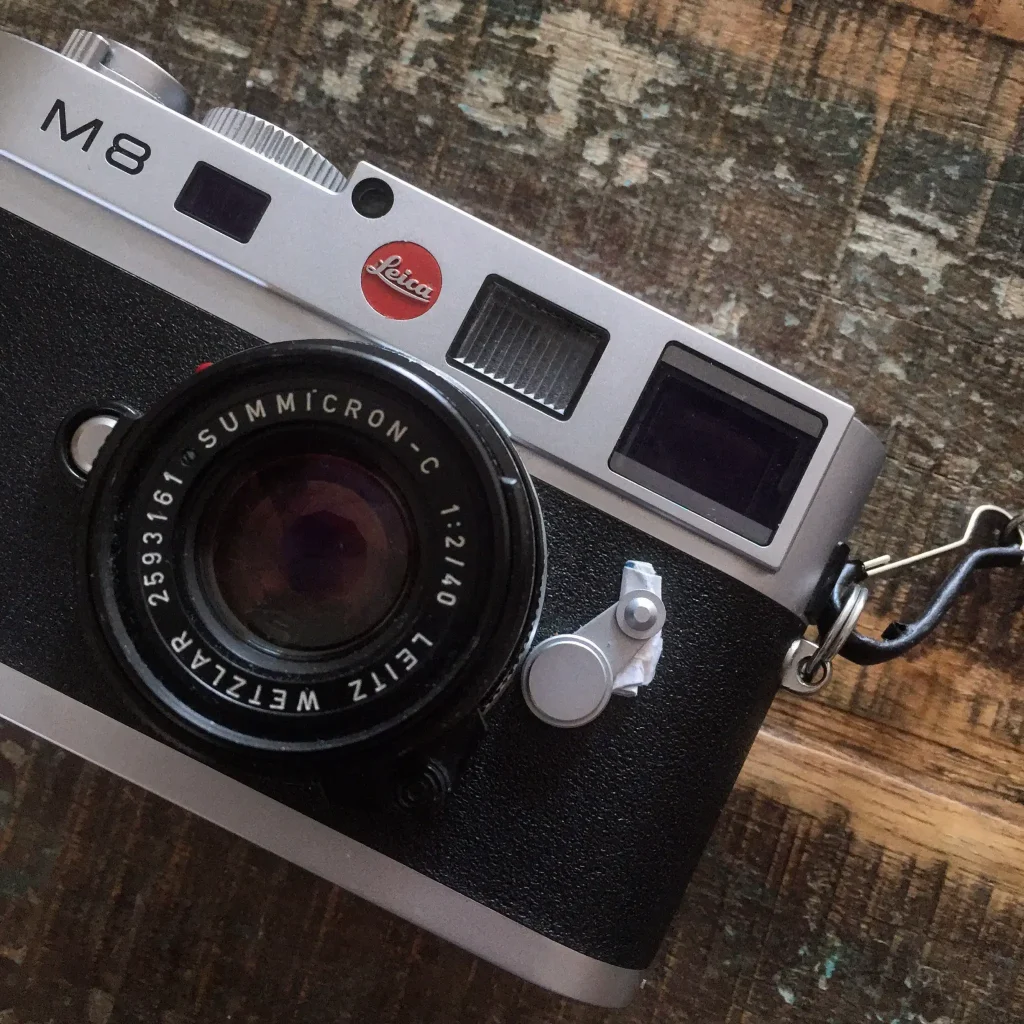
Unlocked lens mounting
Another way to show the 35mm lines is to mount the lens to the point just before it clicks into place. One of the lugs of the bayonet mount activates the correct frame lines, so in not quite mounting the lens, the default 35mm lines are selected. Unfortunately, thanks to the pitched rangefinder cam mentioned above, this means the rangefinder is inaccurate. In short, this method works, but only really if you intend to zone focus. (Thanks to Kevin To for this suggestion)
Hacking a bit off the lens
The last method is definitely the most barbaric, yet actually it doesn’t look that big a deal to perform. The lug I mentioned that activates the frame lines can be filed down. I didn’t actually do this, I decided against it, but I did find this little guide in a forum. The idea is to take a small amount off the part of the lens mount I’ve highlighted in this picture.
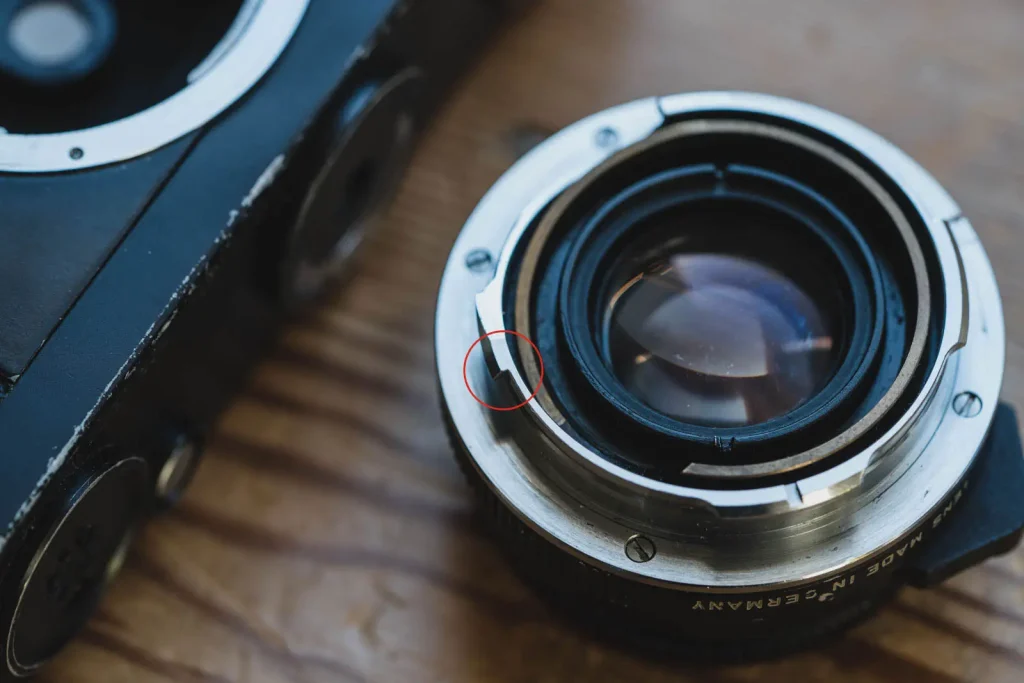
All this does is stops the lens interacting with the lever you can see just inside the lens mount of your Leica M.
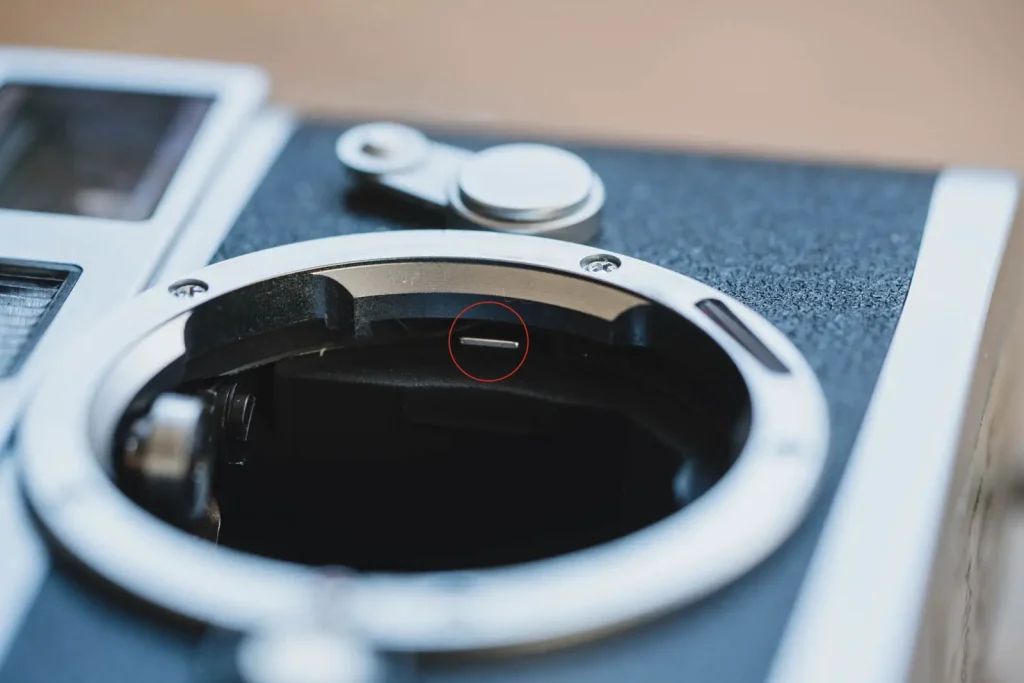
This does permanently prevent the 50mm lines activating, and since its metal you are filing away there is little that can be done to undo your handy work. But does it really matter? Reading around, I found it hard to find any real disadvantage in doing this if you have a preference for the 35mm lines. That was until I spotted the the comment at the bottom of the post linked to above about the compatibility with the Minolta CLE. The CLE is a camera that rather than having 35mm frame lines in the default/no lens attached position (like the Leicas do), it has its 28mm lines. This means that if you file your 40mm Summicron lens’s lug down to use on a Leica it will bring up the 28mm lines when you mount it back on your CLE. Unless you are really precise like it sound that chap on the forum was…
In summary, framing with a 40mm Summicron on any other Leica M, is not quite ideal, though if you don’t mind a compromise, it is possible. And let’s face it, rangefinder framing is always a bit of a guess anyway. Of course if you really like the 40mm focal length, you could just buy a Leica CL, Minolta CLE or Voigtlander R3a/m – all of which have 40mm lines.
Image quality
So that’s the compatibility issues tackled, at least as well as I think I can tackle them. What makes this lens really interesting is actually these other claims of it being the Leica “sleeper” lens.
This lens is a Summicron at the sort of price you might pay for a Voigtlander lens. I actually paid the higher end of what they seem to go for mine, despite it not being in top whack condition. I bought it on a whim after getting fed up of missing them on eBay for £320. Whilst that is the higher end of average for this lens, you could still add at least another £100 if not £200 for any other M-mount Summicron. My 35mm v3 Summicron cost me £750 when I bought it, that’s more than double this lens… And let me tell you before I get any further, I’m going to go out on a limb and say the 40mm is a better lens than the 35mm v3.
I wouldn’t normally make such claims as these. Lens quality is far too subjective a thing to make sweeping generalisations in my opinion. But, on this occasion the 35mm v3 has one flaw that in the end I just couldn’t get over, its propensity to flare.
Flare and ghosting
I’m not going to tell you that this 40mm lens isn’t prone to flare. It is. In fact, with the angle of the sun in the frame, or anything up to about 45 degrees out of it, it flares a fair amount!
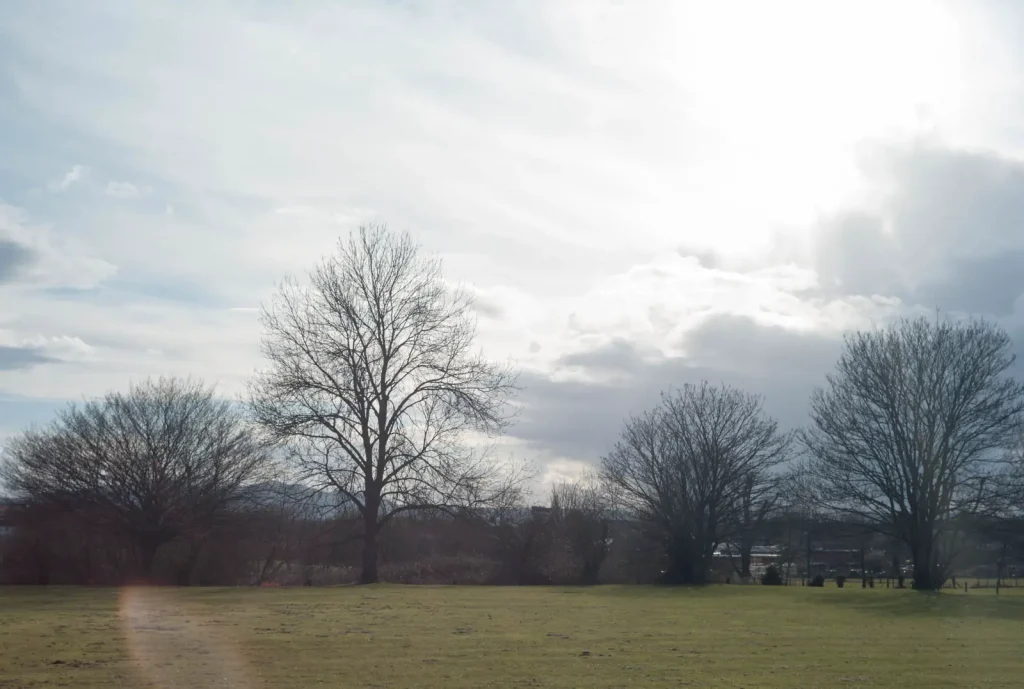
It veils quite heavily when shot toward a light source, there’s a little rainbow that appears, and quite often a blob of odd shaped ghosting. There’s even a sweet spot where the light catches it at just the right angle and find yourself dealing with a sort of streaky flare that can take over a large part of the frame.
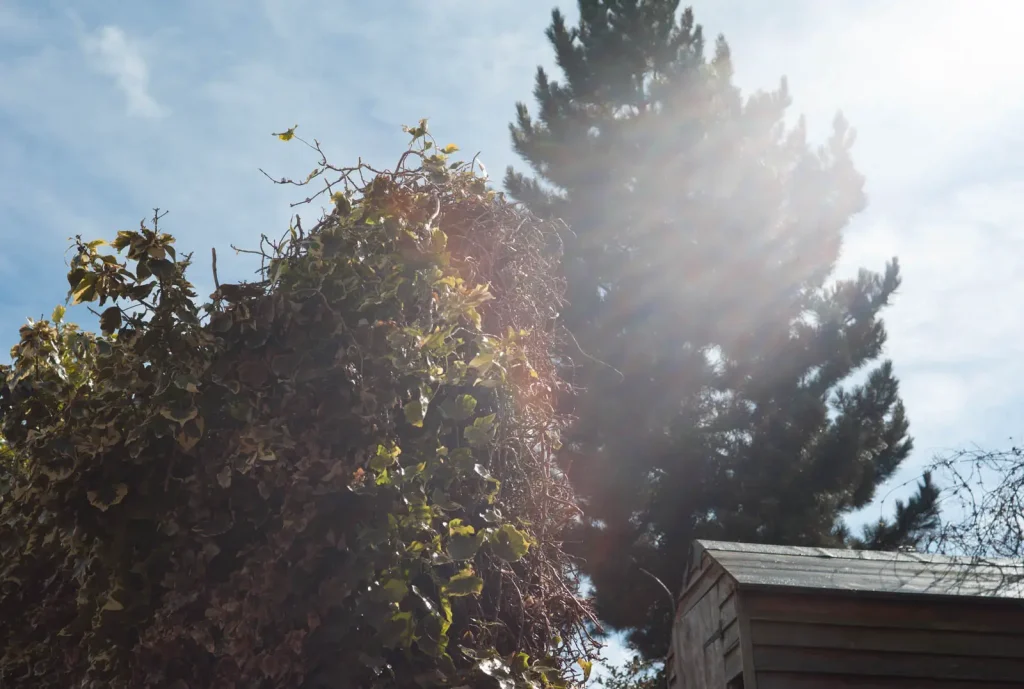
Of course if all of this bothers you, probably shouldn’t be buying a single coated lens from the early 1970’s, and you certainly shouldn’t be trying to treat it like a modern lens by shooting into the sun.
That said, this is probably the time when most people would recommend the use of a hood. Im sure a hood would make a difference, unfortunately for me, I have a real and strong dislike of lens hoods – they get in the way of viewfinders, they make the camera awkwardly bigger and become something extra to lose. Not my cup of tea. I said the same in my review of the 35mm Summicron. I concluded in that review that since I didn’t like a hood, the lenses propensity to flare was something I’d just have to live with. Unfortunately, in the end I couldn’t live with it, and I sold the lens.
With the 35mm I found myself dealing with a big red blob of ghosting. The 40mm flares in a very similar way to the 35mm, it just doesn’t exhibit that big red blog. This is pretty much the key to it being a “better” lens. For me, the red blobs I got out of the 35 eventually killed; I just found myself frustrated by the frequency with which they appeared.
Thankfully, as I say, it’s not something the 40mm exhibits. Not only this, but in many other ways the 40mm Summicron’s character is really quite similar to that of my old 35mm, a character that I was otherwise actually quite fond of.
A 1970’s Summicron character
As with the 35mm v3, this lens has a good dose of contrast. The result of this is images that have strong subjective sharpness about them.
In fact, in this regard there is very little that separates this 40mm from my old 35mm v3 or even my 50mm v4 Summicron. It’s sharp into the corners, and from what I can see doesn’t fall over too badly even when shot wide open. In fact, it might even be fractionally more contrasty than 35mm – certainly stopped down where the perceived detail in the results feels very high. I think this is pretty impressive considering the second hand value of these things relative to their more conventional focal length brethren.
Yet despite the 40mm Summicron’s contrast and perceived clarity, being a lens from 40 odd years ago, perhaps because of its propensity to flare and the way it deals with light, it doesn’t have quite the modern look to the results. The shots I’ve taken in black and white in light from a window give a nice clue to the age of the lens and the character I’m talking about. The mid tones just look slightly more gentle than those I’d expect from a more modern lens.
That being said, it doesn’t really disappoint in terms of other common objective measures. I certainly can’t see any distortion I’d worry about. It vignettes at f/2 for sure…

…but stopped down this seems to disappear.
Bokeh
Bokeh – which seems to be the common complaint with this lens – isn’t actually that bad either, even in situations that by rights should see it trip over. I can see what the complaint is, but it doesn’t really bother me…
I’m sure bokeh isn’t as awesome and amazing and wonderful as the “Bokeh King” 35mm v4 (if you detect scepticism/sarcasm, you’d be right to), but it’s not far off what I’d expect from my 50mm v4. My experience of Summicron lenses is that bokeh just isn’t the perfectly smooth creamy dream I get from my 50mm Sonnar, but then from a 40mm f/2 lens, I’m just not sure that’s a priority…? (It never really bothered me with my 50mm either to be honest)
Some concluding thoughts
This little lens is of course the ideal companion to the Leica CL, a camera that in itself sits outside of the Leica M family line yet just about manages to key itself into the system. It’s tiny size keeps the CL small, yet it’s qualities allows the CL to produce Images that are both of a subjective and objective Leica quality. Despite all this, because of its odd focal length, it definitely sits right on the fringes of the of the Leica M camera system.
There is no arguing with the fact that it can be used with reasonable success when attached a Leica M, but it does to me feel like a functional compromise compared to using either 50mm or 35mm lenses. That said, I don’t think I’d be worried about that compromises if I wanted a Summicron lens, but couldn’t justify paying twice the money for a similar focal length without them.
This is why this lens sits at the value it does. I think it’s a bit of a misnomer to say it’s a sleeper. Plenty of people have discovered and revel in its merits. You only have to search google to find forum thread after forum thread of people giving it broadly similar praise to what I’ve had to say about it. But with that praise of course comes acknowledgement of its wider compatibility flaws, and with those flaws comes acknowledgement of them through the lower price tag.
For my personal use, I have a Leica CL. A camera that despite its flaws, I can’t see me parting with. That combined with the fact that this 40mm is now the only Summicron I have, and the fact that it comes from an age where the character of a Summicron meant something a little less than perfect, all add up to a lot of points for keeping this little 40mm Summicron.
You can find more of my photos taken with this lenes here
The Minolta M-Rokkor
Just as a final point, I just thought it worth mentioning that Leica weren’t the only ones to produce this lens, it was also produced by Minolta the form of the 40mm m-rokkor. Just to make things slightly complicated there are also two versions of the m-rokkor. The early version that came with the Leitz Minolta CL (the same camera as the Leica with a different badge) was the same optical design, but was made in Japan with Minolta glass. The later version that came with the Minolta CLE was multi coated and had a parallel rangefinder cam. I haven’t used either so don’t feel informed enough to comment; it just seemed somewhat pertinent to give them a mention.
Useful links & references:
Leica Summicron-C 40/2 – A much more in depth review of the optical qualities of this lens from KJ Vogelius
The Leica (Leitz Minolta) CL on Leicaphilia – Useful info about the lenses
A review on SLR lens review
Thread on photo.net with loads of further links
Share this post:
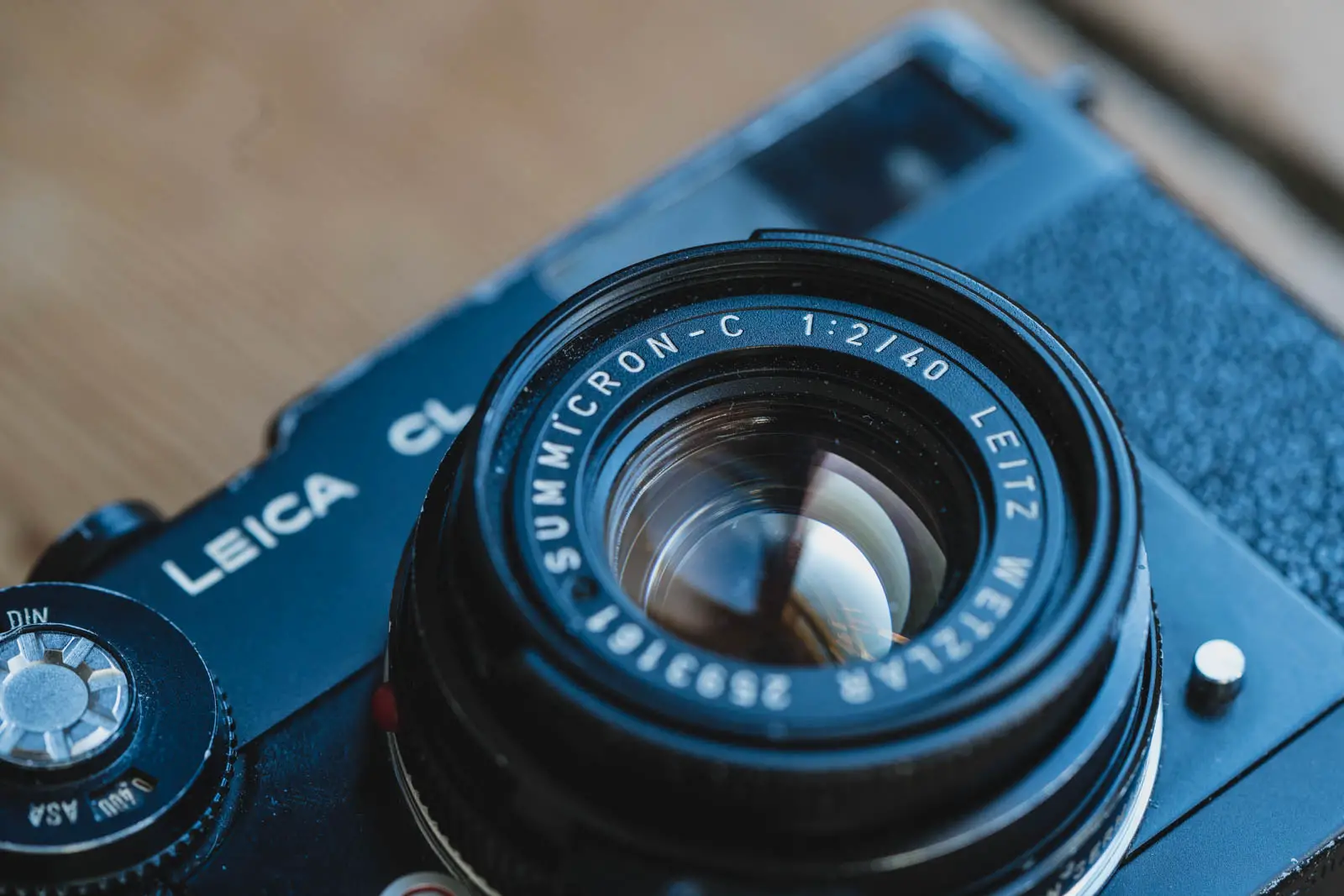
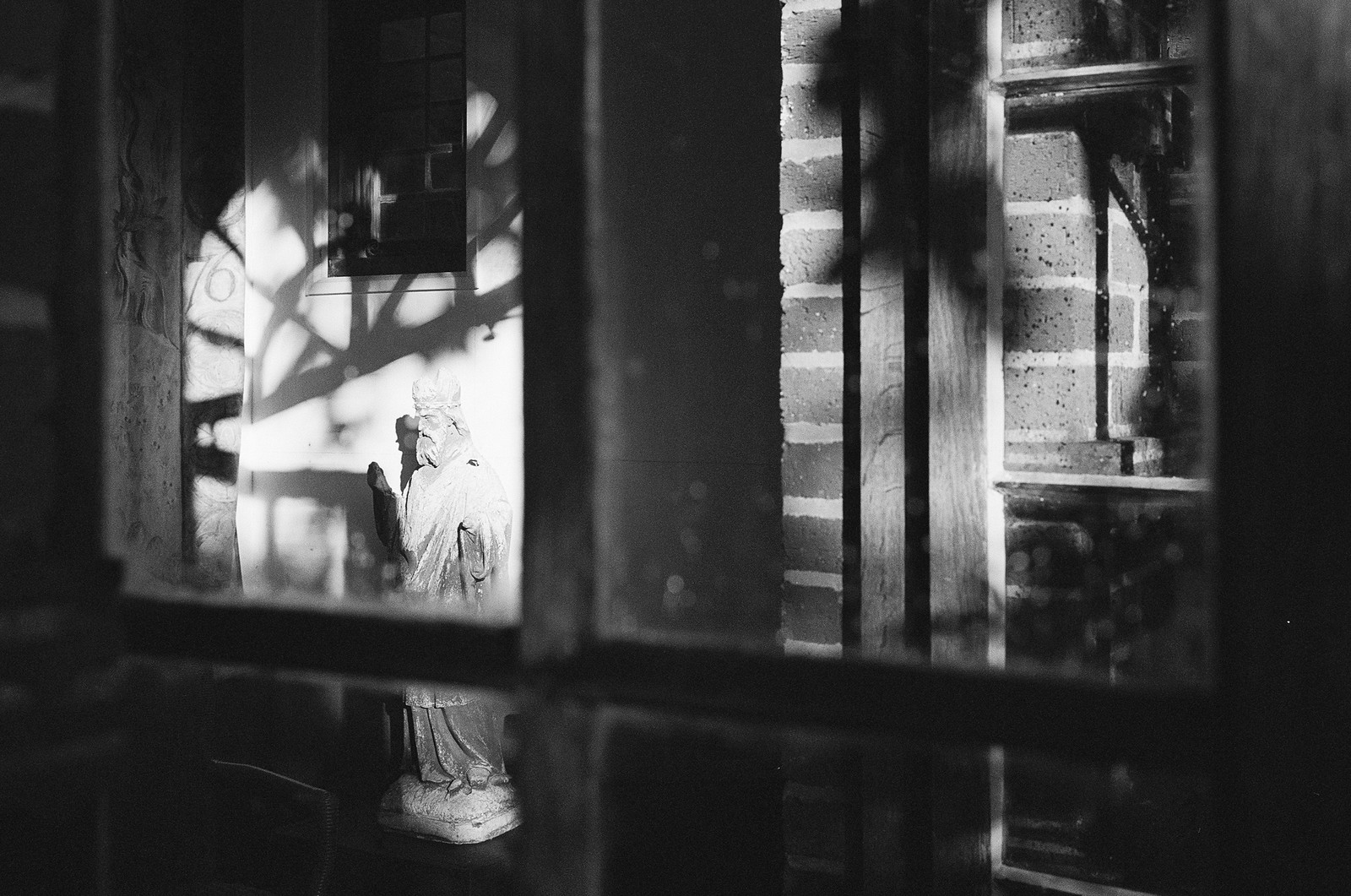
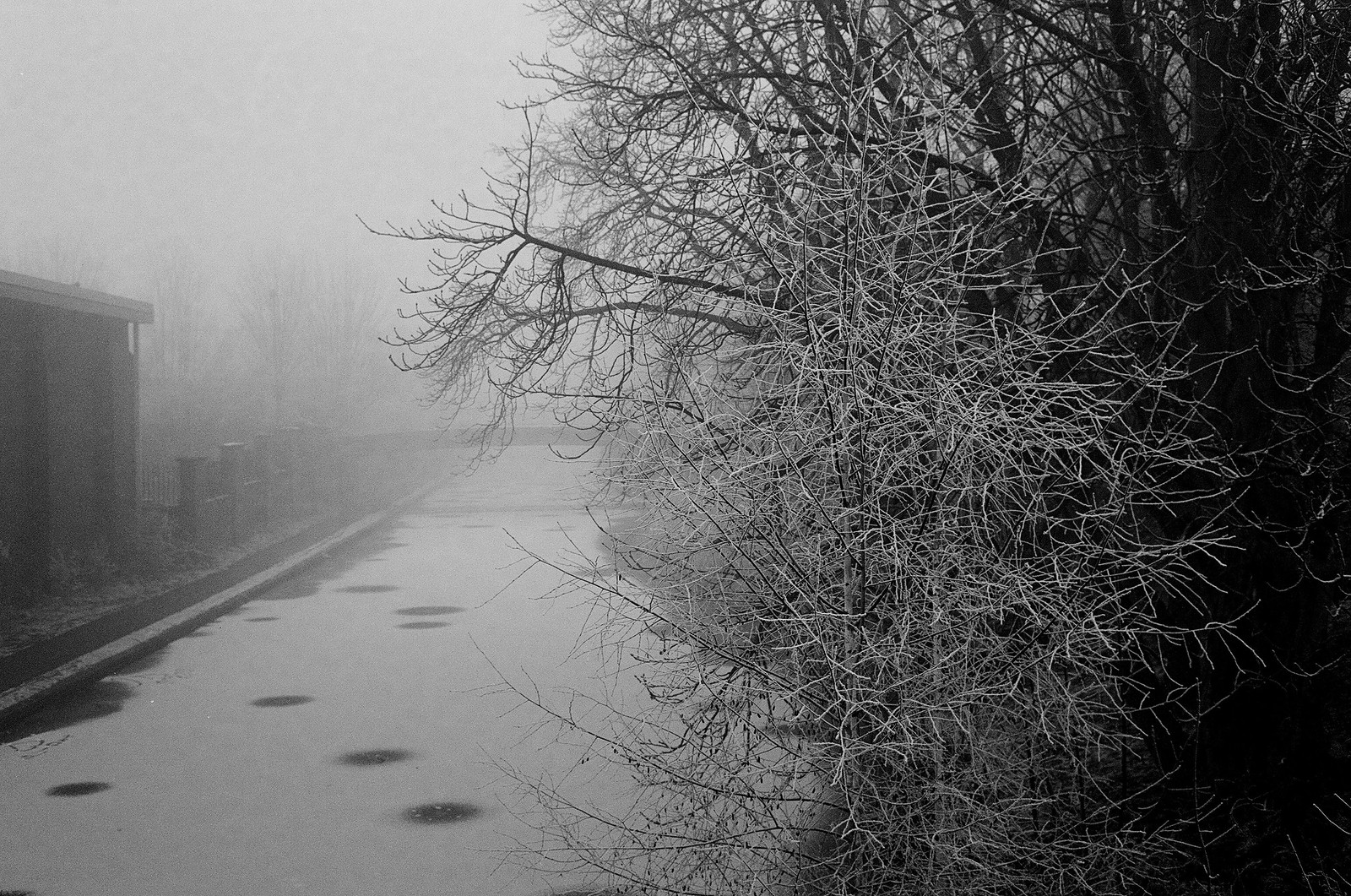





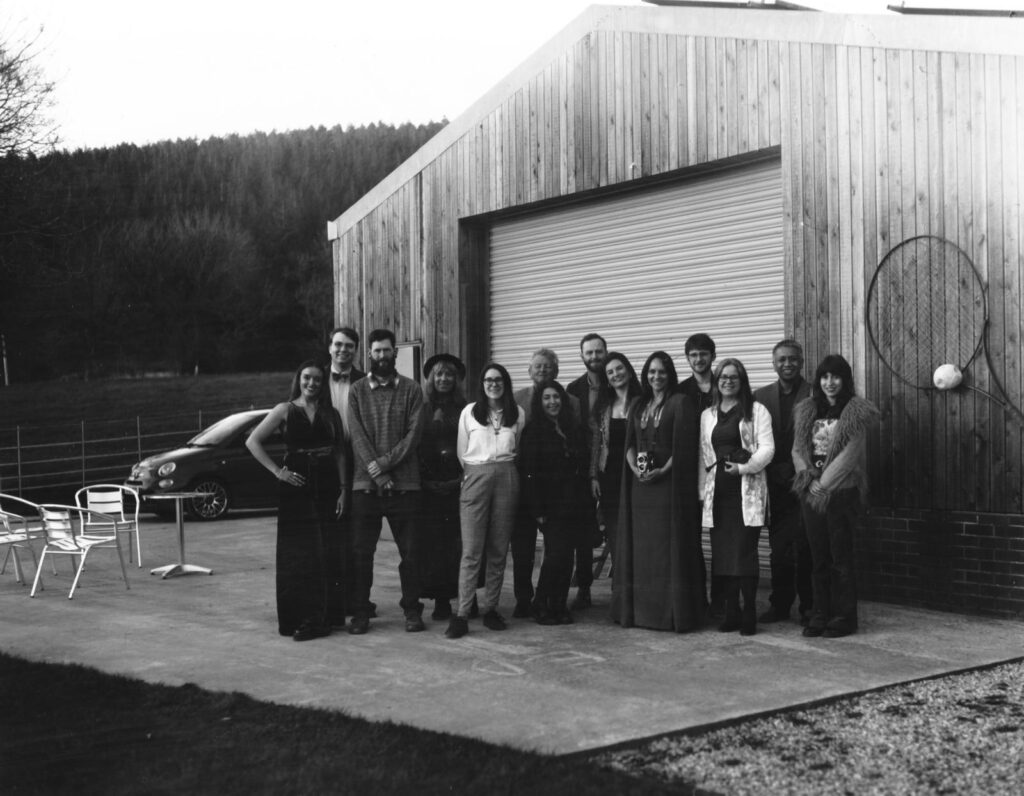
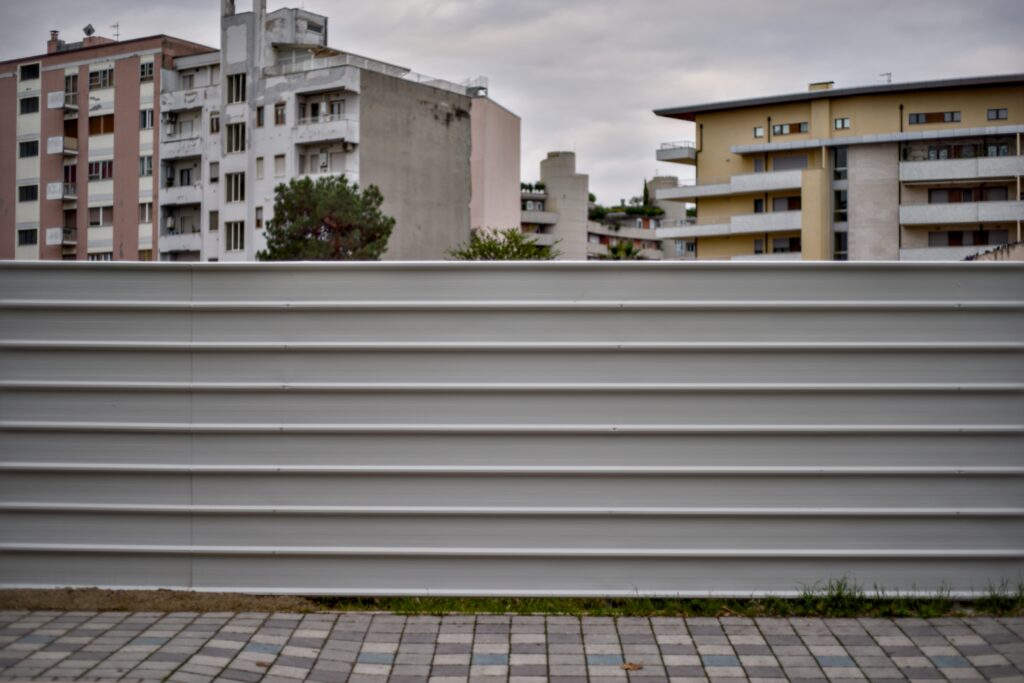





Comments
Frank Lehnen on Leica 40mm f/2 Summicron Lens Review
Comment posted: 02/04/2016
Comment posted: 02/04/2016
Comment posted: 02/04/2016
Comment posted: 02/04/2016
Comment posted: 02/04/2016
Comment posted: 02/04/2016
Matthew on Leica 40mm f/2 Summicron Lens Review
Comment posted: 02/04/2016
I confess it came up when I was searching for a solution, not permanent but it works well enough.
Comment posted: 02/04/2016
Stephen on Leica 40mm f/2 Summicron Lens Review
Comment posted: 02/04/2016
I know that I don't want one now!
Comment posted: 02/04/2016
marco north on Leica 40mm f/2 Summicron Lens Review
Comment posted: 02/04/2016
Comment posted: 02/04/2016
KJ Vogelius on Leica 40mm f/2 Summicron Lens Review
Comment posted: 02/04/2016
http://gear.vogelius.se/-reviews/leica-summicron-40/index.html
I must say you capture the characteristics of the lens very succinctly. Some very nice samples too! It really does render beautifully. Going back through my photos from last year a great number of the ones that look the prettiest were made using the Summicron 40.
How do you find the tab? I sometimes contemplate replacing it with one that's a bit more.. tab shaped.
Comment posted: 02/04/2016
Comment posted: 02/04/2016
Jack on Leica 40mm f/2 Summicron Lens Review
Comment posted: 02/04/2016
Comment posted: 02/04/2016
Comment posted: 02/04/2016
wayne on Leica 40mm f/2 Summicron Lens Review
Comment posted: 02/04/2016
Comment posted: 02/04/2016
Dan Castelli on Leica 40mm f/2 Summicron Lens Review
Comment posted: 04/04/2016
I've got a CL. It's been in the shop since last December...long story. I've been looking to either add the 40mm Summicron/Rokkor or the 50mm Summarit. I just want to make my M2/7 a slimmer profile camera package. Your review helped, but I'm still undecided. Currently, I'm using a 35mm f/2.5 Voigtlander or a Summicron on the CL. Just want to lighten my load.
I've read that the 40mm Rokkor was in fact a lens that had the lens elements mounted in the brass tubes in Germany, but the lens chassis was made in Japan with the engravings identifying it as a Minolta Rokkor lens. Plus, the Minolta's have a more common filter size. The Summicron has that oddball thread pitch, and new hoods/filters designed to screw into the lens properly are rare to find. The rubber in the shades have also deteriorated due to age.
Comment posted: 04/04/2016
Comment posted: 04/04/2016
Comment posted: 04/04/2016
Comment posted: 04/04/2016
heiko bertram on Leica 40mm f/2 Summicron Lens Review
Comment posted: 07/04/2016
There also seems to be a more expensive type II
http://www.ebay.com/itm/6-bit-flange-adapter-type-II-for-Leica-M8-M9-lens-28mm-90mm/140666070239?_trksid=p2047675.c100005.m1851&_trkparms=aid=222007&algo=SIC.MBE&ao=1&asc=36213&meid=b3247a7f3472464486cf3ecb9efa6fbe&pid=100005&rk=2&rkt=2&sd=360506368209
yours, Heiko Bertram
David Murray on Leica 40mm f/2 Summicron Lens Review
Comment posted: 07/08/2016
I wasn't using the 90 so left it out. Bought a Gossen Sixtomat Digital as its lightweight and takes one AA battery. Yes, the rangefinder cam is stepped, it does affect focus as I discovered with the 90! However, for street photography, which has become my main interest now, its fine using the hyperfocal distance method. The scales are easy to see and stopped down to at least f8, its just not an issue. Plus, you can estimate the distance just as our forebears did. As far as the framing goes, yes it brings up the 50mm frame. I welcome this as it means I can get everything in the 50 frame and know that there will be a border. As I have my negs scanned to disc, if printing out I just tell the chap to zoom in slightly to get rid of the excess. Also, I discovered Voigtlander had a 40mm for the Bessas and one could buy a seperate viewfinder to plug in the shoe. My partner bought me on for Christmas. So, using the 40mm f2 Summicron - C on an M series Leica really is no problem at all!
Comment posted: 07/08/2016
Alex Hakimi on Leica 40mm f/2 Summicron Lens Review
Comment posted: 26/09/2016
The 35mm framelines are definitely more accurate than the 50mm frames lines on these older bodies. Here's a great post on frameline accuracy with this particular lens on an M2: http://photo.net/leica-rangefinders-forum/00Dvnv
My approach to framing is pretty simple. I pretend it's a 35mm lens unless there's something critical at the edge of the frame, in which case I take a step or two back to make sure it winds up on the frame.
In regards to keeping the 35mm frame permanently activated, there are two methods I am currently using. The first (and safer) method is cutting a small piece from a wide and thick rubber band and lodging it between the selector and body. The second method is mounting but not locking, and thereby preventing the frameline selector from changing position.
It's a great lens and certainly very useable on the other M bodies.
Comment posted: 26/09/2016
Comment posted: 26/09/2016
Comment posted: 26/09/2016
Comment posted: 26/09/2016
Comment posted: 26/09/2016
Comment posted: 26/09/2016
David Murray on Leica 40mm f/2 Summicron Lens Review
Comment posted: 28/11/2016
Connor on Leica 40mm f/2 Summicron Lens Review
Comment posted: 19/08/2019
Comment posted: 19/08/2019
Comment posted: 19/08/2019
Comment posted: 19/08/2019
David Murray on Leica 40mm f/2 Summicron Lens Review
Comment posted: 09/04/2021
Fortunately my black 1974 SL does still have a working meter. Btw, I simply insert a PX625 alkaline cell and, compared to a Gossen Multisix meter, the SL meter gives half a stop underexposed. So I meter and back off half a stop. With Ektar 100 and Ilford XP2, I can discern hardly any problems with using the straight meter reading.
The Fujifilm GF50 F3.5 - Review - Peter Poete Photography on Leica 40mm f/2 Summicron Lens Review
Comment posted: 09/05/2021
Tony Wu on Leica 40mm f/2 Summicron Lens Review
Comment posted: 28/03/2023
Another tips: the 40mm scope of view in the 0.72x viewfinder can be estimated roughly by leaving your eye a bit space before the glass, and at this manner the view you get in the viewfinder is a bit smaller than the 35 mm framelines. This estimation works pretty well for the left-right sides but not that okay for the vertical sides.
Final P.S.: The Minolta versions of this lens do not use the so-called "pitched" cam, and if you use the "Unlocked lens mounting" method, the focus accuracy is not affected——I tested at wide-open and close-up shots.